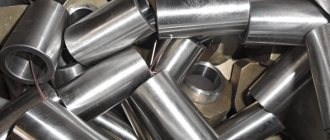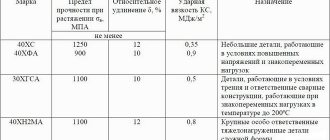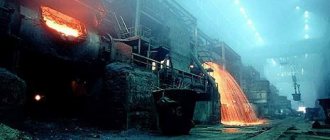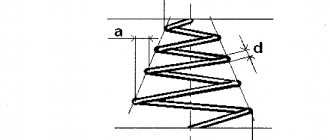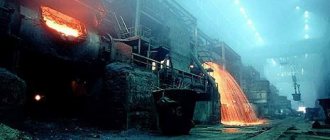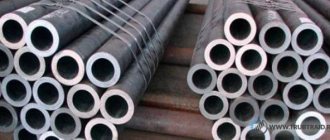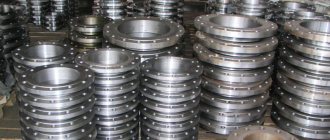Medicine is an area in which sterility and quality are more important than anywhere else, therefore, increased requirements have been developed for all materials used in medical and scientific institutions. For the production of instruments, only medical stainless steel is used, the grade of which is determined by GOST.
The application is determined by the properties of the material, its density and hardness. Products made from medical metal are not subject to the following defects:
- less scratches are formed, which are places where dirt accumulates;
- the material is not corroded by alkalis and acids;
- stainless steel does not deform at high temperatures;
- these are reliable and durable products;
- the material is extremely resistant to corrosion.
GOST for medical instruments
The Soviet standard was confirmed in 1992 by Russian GOST R 50328.1-92, which establishes regulations for the use of material for surgical instruments. This is how another name is formed - surgical steel. The material should be used not only to make cutting instruments, but also other medical supplies such as cuvettes and glassware. The document provides an idea of the grades of medical metal.
GOST regulates the production of medical instruments by Russian enterprises and production facilities in the CIS countries. In Germany they use the DIN standard. There are several standards in the United States: AISI, ASTM, AMS and ASME. The European Union uses EN standards. China and Japan have developed their own regulations.
Properties of medical stainless steel
So why do we so often encounter the cold shine of stainless steel in medical institutions? The answer to this question lies in the property of stainless steel, which is able to provide such a key characteristic as sterility. Due to the resistance of steel to high and low temperatures, as well as the resistance of steel to chemicals, stainless steel can be sterilized in various ways. Stainless steel products are also less susceptible to mechanical damage, such as scratches, which also helps maintain the sterility of instruments and equipment.
Classification of medical steel
Today, the following groups are distinguished by composition:
- Molybdenum chromium. It has high mechanical strength and is resistant to elevated temperatures, which is extremely important in the sterilization process. The disadvantage of the material is its significant cost, since its structure includes an expensive metal - molybdenum.
- Chrome-nickel. This alloy contains chromium and nickel. It is extremely resistant to corrosion and acidic and alkaline environments.
- Chromium ferritic. This is the most popular material. It is very durable, but tools made from it can be easily processed: sharpened and adjusted. This material is resistant to microscopic cracks and is characterized by high anti-corrosion properties.
The most popular Russian medical steel is grade 18/10 or 12X18H10. It is similar to the German standard X5CrNi10-10. In the European EN system it is designated 1.4301.
Features of the material
Medical steel is an alloy of several types of metals that are resistant to corrosion and have high hardness. Initially, it was used exclusively for the production of medical instruments, in fact, this is where the name came from. But years later, jewelers discovered its unique properties and began to actively use it to make budget-class jewelry. The material has a homogeneous, non-porous structure, is easy to decorate, and has antiseptic properties.
What brands are used for specific medical instruments?
It should be understood that not all medical metals can be used to make instruments. Standards are set for each product, since functionality is directly determined and shaped by many factors. Therefore, certain grades of stainless steel are established for specific products:
- For products of a cutting and piercing nature, such as knives and scalpels, it is recommended to use steel 50x14MF, 20x13, VZK - reinforced with stellite.
- Dental instruments such as bone forceps should be made from 40x13 or 45x13 grade.
- Syringe needles are made from steel 12x18N10T, and surgical needles are made from 12x13 and 20x13.
- The clamps are made from steel 20x13.
- Tweezers of various sizes are made of reinforced sintered VZK or steel 12Х18Н10Т, as well as 12х13 and 20х13.
- Branches and needle holders are made from steel 20x13.
- In the production process of dental burs, it is necessary to use sintered steel VK-6OM, XB5 and analogues with lower tungsten content.
- Surgical implants, if they are made of steel, require the use of grade 03Х18Н13МЗ.
- For rod-type dental instruments, austenitic steel wire material made of chromium and nickel is used.
- Rejecting and probing devices are made from austenitic steel 12Х18Н10Т, ferritic steel 08Х17, 12х13 or 20х13.
- Medical microinstruments are made from grade 20x13, ZE 90-VI or EP-853.
What is “medical” steel 18/10
What is “medical” steel 18/10.
Stainless steel is considered the best material for kitchen utensils today, and almost every family now has stainless steel cutlery
The most popular grade of steel used for making cutlery is marked 18/10. Moreover, such markings appear on very inexpensive Asian cutlery and on products from leading European manufacturers. What do these numbers mean?
Steel 18/10 - according to the German DIN standard it is X5CrNi18-10, according to the European EN standard it is 1.4301, according to our GOST it is grade 12Х18Н10. This alloy contains, in addition to iron, 0.12% carbon, 18% chromium, 10% nickel and up to 1% other impurities. That's where the numbers 18 and 10 come from, they indicate the content of chromium and nickel. Steel density - 7.8 g/cubic. cm.
In advertising, such steel is often called “chrome-nickel” , “medical” , “space” and some special properties are attributed to it. Indeed, such steel is used for the manufacture of medical instruments, this is due precisely to the properties of the material, primarily due to its density. The fact is that 18/10 stainless steel is optimal in its density and hardness for use in medical institutions; such steel produces fewer scratches where dirt would accumulate, providing a favorable environment for the proliferation of microbes. This steel is resistant to acids and alkalis, including at high temperatures. This is why 18/10 stainless steel is used in medicine. This steel does not have any other special properties.
Yes, 18/10 stainless steel is quite expensive; cutlery made from such steel can rarely be classified as cheap. For inexpensive cutlery, corrosion-resistant steel is most often used. This steel is marked 08Х13.
If on the back of the cutlery you saw the designation 08X13 or 12X13. You should not be afraid of such a product; on the contrary, this is a big plus for the manufacturer for his honesty. The fact is that GOST 27002 “Cookware made of corrosion-resistant steel” indicates that “for the manufacture of bodies and lids of dishes and cutlery, steel grades 08Х13, 12Х13, 12Х18 should be used.” The only visual difference between this steel is the shine of the product; it gives off a slightly gray tone. Some advise using a magnet, they say 12X/18 does not magnetize, but 08X13 does, but practice has shown that such advice does not work accurately.
Unfortunately, some, especially Asian manufacturers, are disingenuous, putting the 18/10 mark on cutlery of unknown steel. I emphasize some, because many Asian factories make high-quality and high-end cutlery from 18/10 stainless steel….
Medical instruments
III.5. Materials for the manufacture of surgical implants
Surgical implants are products introduced into the body to perform some of its functions for a long time. The most common type of them are elements for connecting bone fragments. Another type of implant is tracheotomy tubes.
Surgical implants are subjected to significant bending, tensile, compressive, torsional and abrasive loads, as well as aggressive biological environments.
Implants may fail due to corrosion, deformation or destruction under mechanical loads; Rejection of the implant by biological tissue may occur.
Operating conditions and the nature of failure determine the requirements for the chemical composition, structure and properties of metal materials for the manufacture of surgical implants. The main requirements for steel and alloys for the production of surgical implants are: high biological compatibility of the implant material and the tissues of a living organism; high resistance to general, local, contact corrosion, stress corrosion; high mechanical properties and, first of all, high fatigue strength, temporary tensile strength; single-phase stable structure.
For surgical implants, chromium-nickel and chromium-nickel-molybdenum corrosion-resistant steels, alloys of cobalt, tantalum, titanium, pure metals - nickel, silver, titanium are used [Feofilov R. N., 1977].
III.6. Materials for the manufacture of multi-edge cutting tools
The group of multi-edge cutting instruments includes dental burs, milling cutters and other dental instruments. Dental burs are used for drilling, milling, finishing teeth and fillings during treatment, filling teeth and for dental work. They work as a cutting tool at high cutting speeds for difficult-to-cut materials. Steel and alloys for burs must have very high hardness and wear resistance. For these purposes, high-hardness tungsten tool steels of grades ХВ5, ХВ4, steels of the same class, but with a lower tungsten content, and sintered hard alloys based on tungsten carbides, for example VK6-OM, are used.
111.7. Materials for the manufacture of probing and pushing instruments
When manufacturing probing and pushing tools, there are no special requirements for steel. The main requirement can be considered increased corrosion resistance. Therefore, these tools are made from corrosion-resistant and less scarce, cheap steels that have the highest technological properties for a given design. These are martensitic class steels 20X13, martensitic-ferritic class 12X13, brass coated with chromium and nickel. Chromium-nickel steel of the austenitic class 12Х18Н9Т, titanium are also used; ferritic steels of type 1X17 can be used.
III.8. Materials for the manufacture of core dental instruments
The group of core dental instruments includes drills, pulp extractors, canal fillers, and root drills intended for processing the tooth canal. These tools act like springs under the influence of significant bending loads, and the steel for them must have a very high resistance to small and large plastic deformations (high values of yield strength and strength). Spring wire of classes I-III made of carbon steels is used.
111.9. Materials for the manufacture of tools with special properties
Microtools, regardless of their purpose, are characterized by the small size of their working parts. The main requirement for steels and alloys for the manufacture of microtools is to ensure the possibility of forming and preserving the finest working parts during the manufacturing process. At the same time, steel for the manufacture of microtools must be high-strength and corrosion-resistant. This can be achieved by using precipitation-hardening stainless steels, which harden at approximately 500°C, which reduces deformation and the depth of the dealloyed layer during heat treatment.
The most rational way is to use high-alloy corrosion-resistant dispersed-hardening (maraging) steels for these purposes. In some cases, corrosion-resistant steels of the martensitic class - 20X13, 30X13 and austenitic class - 12X18N9T are also used.
111.10. Carbon tool steels
For the manufacture of some cutting instruments (scissors, knives, chisels, rod dental instruments, etc.), steel supplied in accordance with GOST 1435-74 “Carbon tool steel” is used. For the manufacture of spring elements, steel supplied in accordance with GOST 9389-75 is used. For the production of medical instruments, steel grades are used: U7A (0.7% carbon), U8A (0.8% carbon), U10A (1% carbon), U12A (1.2% carbon). For medical instruments Steel is used in hardened form, i.e. in a quenched and tempered state. Steels are hardened by heating to 800–840°C followed by cooling in water, an aqueous solution of salt, alkali or oil. Tempering of the material is carried out by heating to 140-200°C, depending on the required hardness.
The structure of steel after quenching and tempering is martensite and an excess amount of carbides. The steel gains high hardness, good cutting ability and wear resistance. Carbon steel has a low cost, does not contain highly scarce alloying elements, and has high technological characteristics: low hardness, good machinability by cutting in the annealed state. As a result of large plastic deformation, high-strength wire and strip can be obtained from steel. However, it has significant drawbacks. First of all, it is a rusting steel, easily susceptible to corrosion in the atmosphere and aggressive environments*: It has low hardenability, which limits its use for the manufacture of cutting tools. In cases where high core hardness is required, tools made of carbon tool steels cannot have a thickness or diameter of the working part of more than 10-12 mm. The need for sudden cooling of such steel during hardening increases deformation and causes the formation of cracks. Steel has insufficiently high strength, reduced toughness and increased brittleness. Low heat resistance of steel can lead to an unacceptably large decrease in hardness after regrinding [Geller Yu. A., 1975]. These disadvantages of carbon tool steels reduce the range of their use for the production of medical instruments.
111.11. Alloy tool steels
Of the numerous grades of alloyed tool steels in the medical instrument industry, Steel XB5, supplied according to TU 14-1-1428-73, is used for dental burs. It contains: 1.25-1.45% carbon; 4.0-5.0% tungsten; 0.40-0.70% chromium; 0.15-0.30% vanadium.
Dental burs made from this steel are hardened and tempered to a hardness of HRC 60-65 units. Steel is hardened by heating to 820–840°C and subsequent cooling in water or heating to 840–860°C and subsequent cooling in oil. Tempering of steel is carried out by heating to 150 ± 10°C.
The structure after quenching and low tempering is martensite and a significant amount of tungsten carbides. After hardening, steel receives very high hardness HRC 60-65 units, cutting ability and wear resistance. Steel is supplied in the form of silver bars - ground rods.
Due to the high tungsten content, Steel is expensive and in short supply. Like carbon tool steels, Steel KhB5 has very low corrosion resistance, heat resistance and hardenability, and is prone to cracking and brittle fracture.
The need to prevent the formation of a gas-saturated layer on medical instruments leads to a complication of their production technology, and in some cases it is necessary to abandon technological operations associated with high-temperature heating.
Titanium alloys tend to overheat during hot forming and heat treatment, and the consequences of overheating are irreversible. Monitoring the condition of the alloy after heat treatment is labor-intensive. Titanium alloys are scarce and expensive. All this has outlined some specifics in the use of titanium alloys in the production of medical instruments. It is most advisable to use these alloys for the manufacture of surgical implants, microinstruments, and ultrasonic instruments.
111.13. Recommendations for choosing steels
The economic aspects of the use of metal materials are determined by many factors. These include:
1. The level of functional properties of the tool achieved when using a specific material.
2. Reliability and durability (service life of a tool made from a specific material).
3. Chemical composition, i.e. the presence of acutely scarce alloying elements.
4. State of supply of rolled products (range), manufacturing accuracy, type and quality of surface, purpose, properties, structure, packaging, etc.
5. Rental cost.
6. The level of technological properties of materials in relation to the production capabilities of the plant.
7. Design of the tool, volume of its production.
Taking into account the main factors allows us to give, in general, economically sound recommendations on the selection of steel and alloys for the manufacture of the main types of medical instruments:
1. For cutting and stabbing surgical instruments: scalpels and knives, it is advisable to use the ISO recommended Steel grade 50X14 MF; scissors—Steel grade 50X14 MF, Steel grade 20X13, reinforced with stellite VZK; dental instruments - Steel grade 40X13; bone forceps - Steel grade 40X13 or ISO recommended Steel type 45X13; injection needles - Steel grade 12Х18Н10Т; surgical and atraumatic needles—Steel grade 12X13, 20X13.
2. In the production of clamping tools, it is advisable to use for: clamps - steel grade 20X13; tweezers - steel grades 12Х18Н10Т, 20Х13; 20X13, sintered carbide reinforced type
vzk;
— needle holders, jaws — steel grade 20X13;
— working surfaces of clamping tools — hardening with corrosion-resistant hard alloy SNGN;
- tongs - steel grade 20X13.
3. For the production of parts, tools, fixtures and accessories, it is advisable to use steel grades 12X13 and 20X13.
4. For the manufacture of surgical implants, titanium and its alloys should be used; steel grade 03Х18Н13М3, cobalt alloys.
5. For the production of dental burs, it is better to use sintered carbide alloy grade VK.6-OM, steel grade XB5 or steel with a lower tungsten content and strengthened by chrome plating.
6. For the manufacture of probing, pushing and other similar tools, it is advisable to use austenitic steel type 12X18N10T, ferritic steel type 08X17, steel grades 12X13 and 20X13.
7. Maraging steels such as ZE 90-VI, EP-853, titanium alloys, and steel grade 20X13 are suitable for the production of microtools.
8. For the manufacture of rod dental instruments, it is advisable to use spring wire made of carbon or austenitic chromium-nickel steel.


